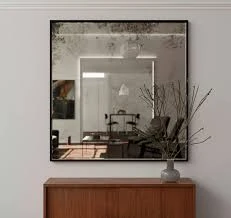

The Advantages and Applications of Single Pyrolytic Low-E Glass
Single pyrolytic low-emissivity (low-E) glass is a revolutionary advancement in the field of building materials, particularly in the realm of energy-efficient architecture. This unique type of glass is coated with a microscopically thin layer of metal oxide, which significantly enhances its thermal performance. As energy conservation becomes increasingly vital in today’s world, understanding the benefits and applications of single pyrolytic low-E glass is essential for architects, builders, and homeowners alike.
At its core, the primary function of single pyrolytic low-E glass is to minimize the amount of infrared and ultraviolet light that can pass through it, while allowing optimal visible light to enter. This property is crucial for maintaining comfortable indoor environments. In colder climates, the glass helps retain heat by reflecting it back into the building. Conversely, in warmer climates, it enables cooling by reflecting outdoor heat away from the interior. This dual functionality not only significantly reduces energy consumption for heating and cooling but also contributes to lower utility bills for homeowners and businesses.
The Advantages and Applications of Single Pyrolytic Low-E Glass
Moreover, single pyrolytic low-E glass is relatively easy to clean and maintain. The smooth, coated surface resists dirt and grime accumulation, which means that less frequent cleaning is required. This is an essential advantage for high-rise buildings and large commercial establishments, where regular cleaning can be a logistical challenge and safety concern.

The aesthetic aspect of single pyrolytic low-E glass should not be overlooked. It can be produced in various tints and finishes, providing architects with the flexibility to design without compromising on performance. The ability to combine energy efficiency with visual appeal is a significant consideration in modern building design, where aesthetics are as important as sustainability.
Environmental responsibility is becoming a critical component of construction and design practices. By utilizing single pyrolytic low-E glass, buildings can achieve better energy performance ratings, often leading to certification under standards like LEED (Leadership in Energy and Environmental Design). This not only enhances a building's marketability but also satisfies the growing consumer demand for sustainable living spaces.
Applications for single pyrolytic low-E glass extend beyond residential homes; they include commercial buildings, retail stores, educational institutions, and healthcare facilities. These spaces benefit immensely from reduced energy costs, increased occupant comfort, and a lower environmental footprint.
In conclusion, single pyrolytic low-E glass presents a host of benefits, from energy efficiency and durability to aesthetic appeal and ease of maintenance. As the construction industry continues to evolve towards more sustainable practices, this innovative glass type stands as a vital component for future-proofing buildings against energy demands. The adoption of single pyrolytic low-E glass is not merely a trend, but a significant step toward creating a more energy-conscious and environmentally responsible built environment. Whether for new constructions or renovations, this remarkable material promises to play a crucial role in shaping the future of architectural design.